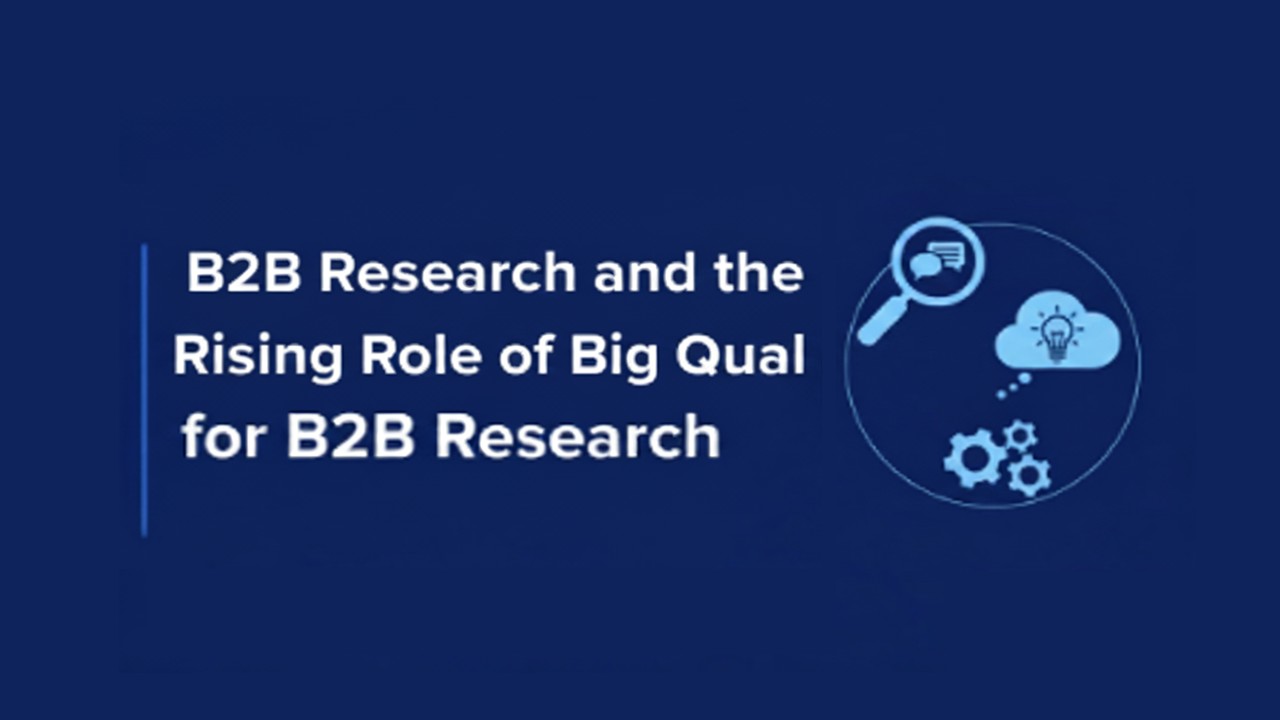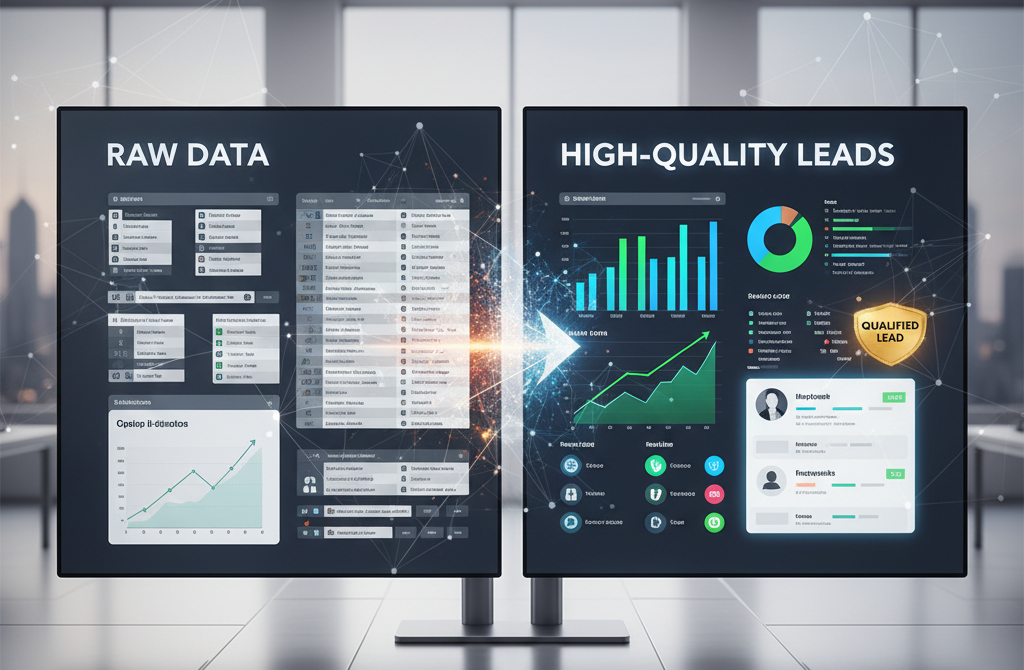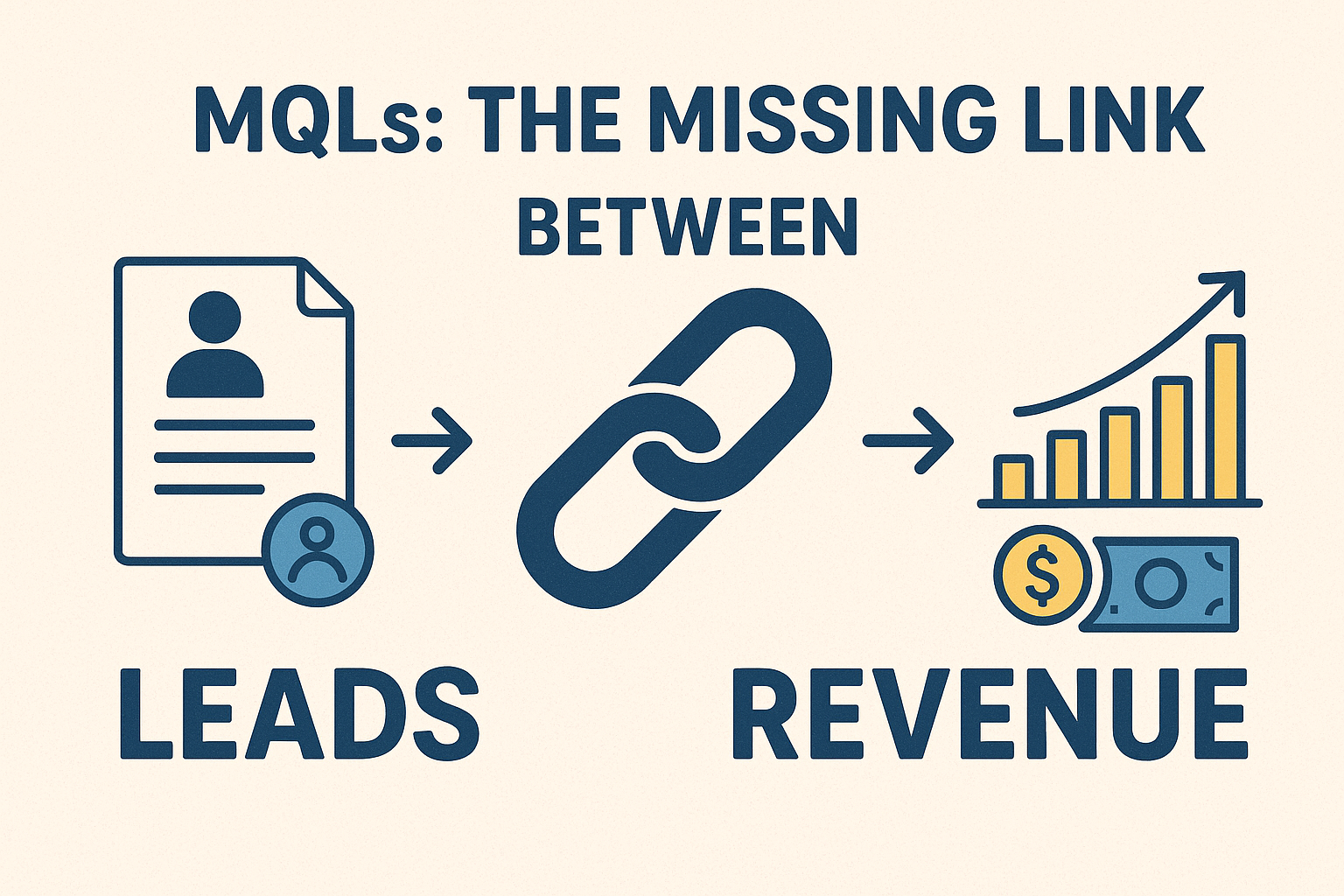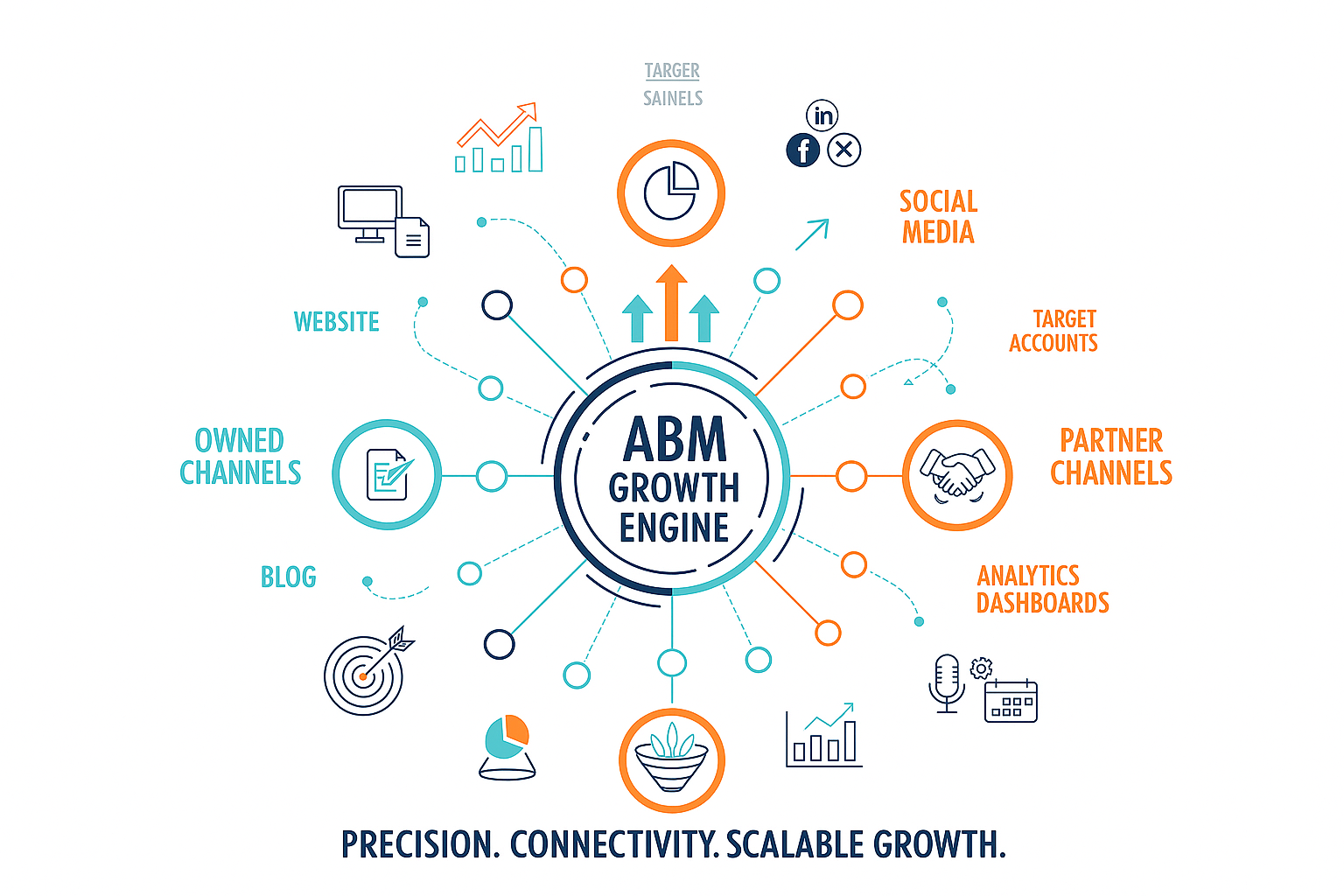Every B2B decision is the result of a complex mix of logic, influence, and human motivation. Traditional metrics can show what decisions are being made, but they rarely reveal why they happen. In an era where buyer journeys span multiple stakeholders, channels, and touchpoints, the ability to decode intention and sentiment has become the true differentiator.
This is where Big Qual, or Big Qualitative research, comes into play. By blending qualitative insights with advanced analytics, it goes beyond charts and dashboards to uncover the perceptions, motivations, and emotional triggers that drive business decisions.
For B2B marketers and decision-makers, integrating Big Qual into research strategies transforms data into intelligence that is actionable, human-centered, and ready to guide smarter campaigns, more effective sales engagement, and sustainable growth.
Table of Contents
ToggleUnderstanding Big Qual and Why It Matters
Big Qual stands for “Big Qualitative Data.” It combines traditional qualitative methods like interviews, surveys, and open-ended feedback with modern digital analytics, natural language processing (NLP), and AI-driven tools.
While quantitative research answers what’s happening in the market, Big Qual uncovers why it’s happening. It captures real human sentiment from conversations, reviews, calls, and online interactions, giving marketers a complete 360° view of buyer intent.
In the B2B ecosystem, where decisions often involve multiple stakeholders, this qualitative depth allows businesses to uncover hidden pain points, emotional triggers, and motivations that drive purchasing behavior.
Big Qual and Its Importance in B2B Research
Modern B2B research is shifting from data-heavy dashboards to insight-driven narratives. Big Qual is at the center of this evolution.
This explains its critical role:
- Humanizing Data – Numbers lack empathy. Big Qual turns customer data into meaningful stories that highlight emotions and context.
- Improving Buyer Personas – It refines audience segmentation by identifying behavioral and emotional nuances.
- Enhancing Sales Conversations – Sales teams can use Big Qual insights to tailor pitches that resonate with decision-makers.
- Strengthening ABM Strategies – Account-Based Marketing thrives on personalization, and Big Qual makes that possible at scale.
How Big Qual Complements Quantitative B2B Research
| Aspect | Quantitative (Big Data) | Qualitative (Big Qual) |
|---|---|---|
| Focus | Numbers and metrics | Emotions and motivations |
| Goal | Measure behavior | Understand behavior |
| Output | Trends and correlations | Stories and insights |
| Use Case | Market sizing, forecasting | Message testing, campaign design |
By blending both approaches, B2B research becomes far more actionable. Big Data reveals the trend, while Big Qual explains the reason behind it, creating a powerful framework for decision-making.
The Power of Big Qual in B2B Market Insights
In complex B2B environments, understanding buyer sentiment is a competitive advantage. Big Qual empowers marketing and sales teams with:
- Contextual Intelligence – Identifying why clients prefer certain solutions or vendors.
- Sentiment Analysis – Detecting tone and mood from digital communications.
- Predictive Clarity – Forecasting potential deal outcomes based on language cues.
- Content Personalization – Tailoring campaigns that connect emotionally, not just factually.
Why Big Qual Matters for Modern B2B Research
- Decoding Complex Buyer Journeys
B2B buyers research across multiple channels, social, email, calls, and reviews. Big Qual helps track qualitative touchpoints that quantitative systems often overlook.
- Enhancing Customer Experience
Qualitative analysis of feedback and calls helps companies understand what frustrates or delights customers, a key to improving retention.
- Aligning Marketing and Sales
Big Qual breaks silos by giving both teams shared insights based on real human data, not assumptions.
- Boosting Campaign Effectiveness
When marketers understand the why behind actions, messaging becomes sharper, content more relevant, and targeting more precise.
Implementing Big Qual in Your B2B Strategy
To integrate Big Qual effectively into your B2B research strategy, consider the following steps:
- Centralize Data Sources – Combine CRM, sales calls, chat logs, and survey feedback into a single analysis platform.
- Leverage AI and NLP Tools – Use tools like ChatGPT Enterprise, NVivo, or Brandwatch to process qualitative data at scale.
- Collaborate Cross-Functionally – Ensure marketing, sales, and research teams work together to interpret insights.
- Monitor and Adapt – Continuously update research models to track sentiment shifts and behavioral patterns over time.
When done right, Big Qual doesn’t replace quantitative data, it enhances it, creating a complete research ecosystem that drives actionable intelligence.
The Strategic Advantage of Big Qual in B2B Research
Traditional B2B research often provides the foundational “what”, for example, quantitative data may show 60% of organizations cite cost as the primary reason for vendor churn. Big Qual is a critical tool that allows organizations to move beyond this surface-level metric to explore the essential “why” and “how.”
It facilitates the identification of underlying emotional and contextual forces, the true levers of business-to-business decision-making. Through the analysis of scaled qualitative data, researchers can uncover that what is reported as “cost” may actually be a symptom of a deeper trust deficit, poor service experience, or lack of perceived value.
This nuanced, deep-dive understanding is essential for informing and transforming corporate strategy, from optimizing value propositions and product positioning to building robust customer retention models.
Big Qual and Its Role in Telemarketing and Lead Generation
For companies engaged in B2B telemarketing and lead generation, Big Qual insights are particularly valuable:
- Detect tone shifts during calls that indicate real interest or hesitation.
- Refine lead scoring based on conversational sentiment rather than static data.
- Personalize follow-ups using language cues from previous interactions.
- Equip sales teams with qualitative scripts that connect emotionally with decision-makers.
Ultimately, Big Qual brings empathy and precision into outreach, two elements that significantly improve conversion rates.
The Future of B2B Research
The next phase of B2B research isn’t just about collecting more data, it’s about understanding it better.
AI, automation, and qualitative analytics will merge to create adaptive research ecosystems that learn, interpret, and predict human behavior continuously.
B2B brands that embrace Big Qual early will not only anticipate buyer needs but also craft experiences that feel human, relevant, and trustworthy.
Conclusion
As markets grow more competitive and customer journeys more dynamic, B2B research must evolve beyond numbers. Big Qual is the bridge between data and understanding, between measurement and meaning.
For B2B marketers and decision-makers, adopting Big Qual isn’t just a trend, it’s a necessity for future-ready strategy. It empowers businesses to act on insight, not instinct; on emotion, not just evidence.
Those who harness the true potential of Big Qual in B2B research will lead with empathy, precision, and purpose in an increasingly AI-driven world.
I hope you find the above content helpful. For more such informative content, please visit PangeaGlobalServices.
FAQs
1. How does Big Qual differ from Big Data?
Big Data focuses on numerical patterns, while Big Qual explores the “why” behind those patterns through conversational and contextual data.
2. Why is Big Qual important for B2B marketing?
It helps decode buyer intent, personalize content, and improve engagement by uncovering emotional drivers behind purchasing decisions.
3. Can Big Qual improve lead generation?
Yes. By analyzing qualitative signals from calls, chats, and feedback, Big Qual helps prioritize and nurture high-quality leads more effectively.
4. How can companies start using Big Qual?
Begin by integrating AI-driven text analysis tools with your CRM, and train teams to interpret qualitative insights alongside quantitative metrics.






